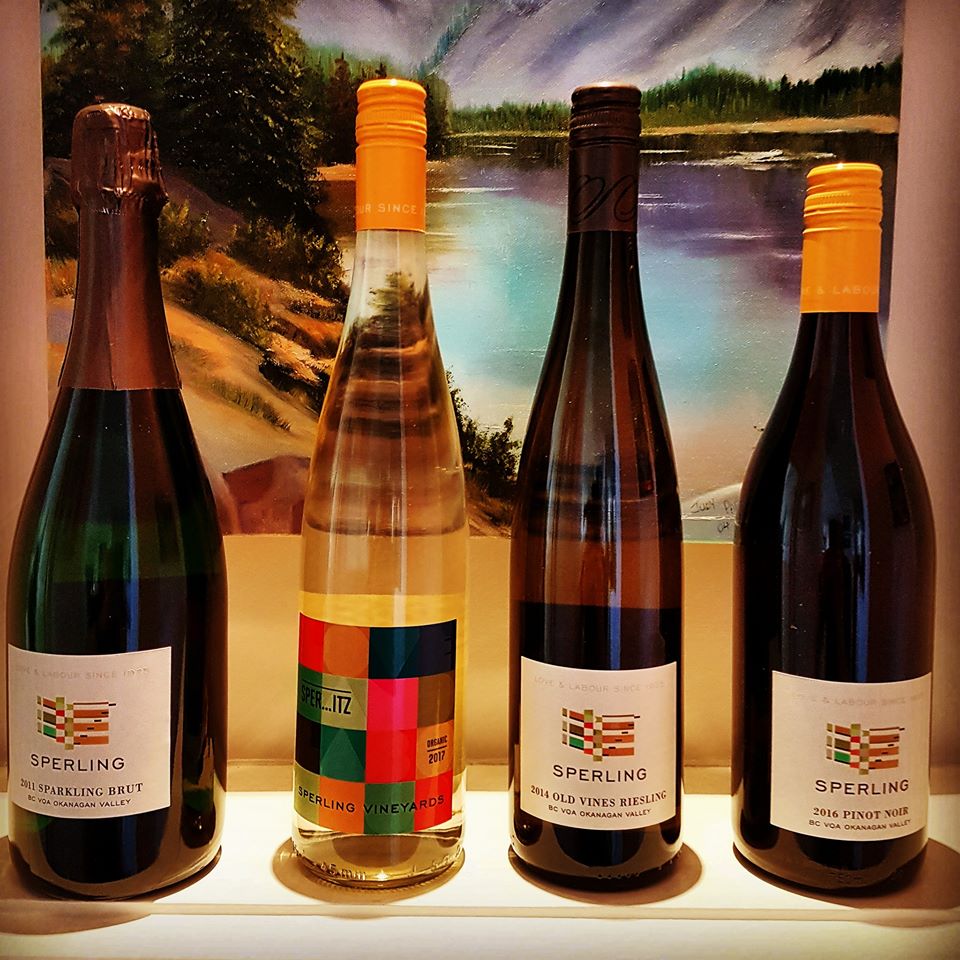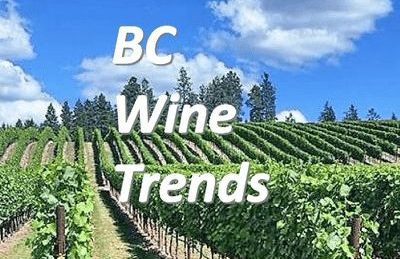 Ann Sperling has released another portfolio of outstanding wines.
Ann Sperling has released another portfolio of outstanding wines.
This vintage marks the first year of certified organic wines from Sperling.
The winery is expanding the tasting room and promoting their vineyard labyrinth as a unique way to enjoy wine country. I expect to provide more information next month when I have a chance to meet with Ann when she is back in Kelowna. For background on Sperling Vineyards please see my earlier post here.
Here is the information on the new releases.
Growing Conditions
Pinot Noir and Riesling
The dominant soil feature is deep, mineralogical clay with properties of ultrafine limestone particles high in calcium, high in minerals and low to moderate in nitrogen. This highly sought-after soil-type is ideal for terroir-driven Riesling and Pinot Noir providing balanced mineral nutrition but requiring enriched levels of organic matter for optimal vine growth and grape berry nutrition for winemaking.
These soils are also delicate so poor farming practices create hardpans. Other famous regions with comparable cool climate and this soil type, such as Burgundy have proven that vines, grown organically express the terroir most typically. Deep-rooted vines can find their own water and nutrients for much of the season minimizing irrigation.
Pinot Blanc
A unique block of Pinot Blanc planted in 1996 to be used for classic method sparkling wine. These grapes show physiological maturity at perfect “numbers” for a classic method sparkling. It reminded us of the few grandfathered blocks of this varietal still grown in Champagne. The soil under these vines is deep, mineralogical clay with a high humus level and very good moisture holding capacity. A rather big canopy provides natural dappled light to ward off the intense summer sun, maintaining freshness in a long-lived wine.
The New Releases
1. Sperling Vineyards Pinot Noir 2016 
Winemaking and Viticulture
Planted in 2008 on blocks noted for their calcium-limestone rich clay soils, three Dijon clones (714,777, B2B) were planted on three different rootstocks (10114, 3309 and Paulson). The Pinot Noir vines total 8.5 acres in two benches on the hillside vineyard. Fermented in one and four tonne lots, including 40% whole clusters, hand-picked and sorted fruit. The wild fermentation proceeded to both alcoholic and malolactic dryness. The wine was then barreled aged in large format (265, 300 and 500L) French oak barrels, with a tiny percentage of new wood.
Technical Data – Alcohol 13%, pH 3.7, RS dry, TA 5.3 g/L
Wine Tasting
Brilliant red garnet colour. Aroma of violets, strawberries and cherries. Flavours of black cherries, mushroom and caramel with a hint of citrus, spice and wood. The pinot has excellent acidity and tannin structures for ageing. Pairs well with pork tenderloin with a fig and chilli sauce.
2. Sperling Vineyards Old Vine Riesling 2014
 Winemaking and Viticulture
Winemaking and Viticulture
The vineyard jewel!
Not released until 2 years in the bottle has passed. Most years, harvested at 20.5 to 21.5 Brix and 10 g/L acidity. Fruit hand-harvested cool in late-fall, then the bunches were sorted and destemmed with a 4-6 hour cold soak before gentle pressing. Slightly settled juice is fermented cool with non-aromatic and wild yeast in stainless steel to desired dryness when fermentation is halted.
Technical Data – Alcohol 11.6%, pH 3.02, RS 12.5 g/L, TA 8.9 g/L
Wine tasting
Ann’s flagship wine. A fruity Halbtrocken style Riesling, pale gold in colour. Aromas of white peach, lemon and lime with a hint of floral rose. On the palate green apple and peach with well-balanced acid and minerality. This wine will age well and is strong enough to accompany even blue cheese.
3. Sperling Vineyards Sparkling Brut 2011
Winemaking and Viticulture
Classic Champagne method techniques used to reflect the single block of old vines in a grower style. Pinot Blanc grapes are harvested “ripe” with perfect skin colour and brown seeds at 18 Brix and 11-12 g/L acidity. After 60 months on lees, the wine is disgorged and using the same wine from the bottles a dosage of 6.5 g/L is added.
Technical Data – Alcohol 12%, pH 3.02, TA 8.9 g/L
Wine tasting
This is a marvellous sparkling wine with the nuances of Champagnes costing twice the price. Aromas of lemon and ripe apple. The flavours are of citrus and lively green apple with a creamy texture and a hint of biscuit and mineral.
4. Sperling Vineyards Organic Speritz 2017
Winemaking and Viticulture
Speritz – made from the oldest vinifera variety grown on the farm – Perle of Csaba – a Muscat variety that was first planted in 1929. The style is aromatic and spritzy, light and refreshing to reflect the wines that Ann’s great-grandparents would have enjoyed daily in their native Piedmont.
Technical Data – Alcohol 7.9%, pH 3.03, RS 42 g/L TA 7.5 g/L
Wine tasting
Light, frothy mousse, perfumed roses, tropical fruit, pink grapefruit and white peach. Put on ice and enjoy this summer on the patio as you take advantage of the low alcohol percentage. A real quaffer!
To order the new releases please visit the Sperling Vineyards website.
For the 2019 new release tasting notes visit Sperling Vineyards New Releases
